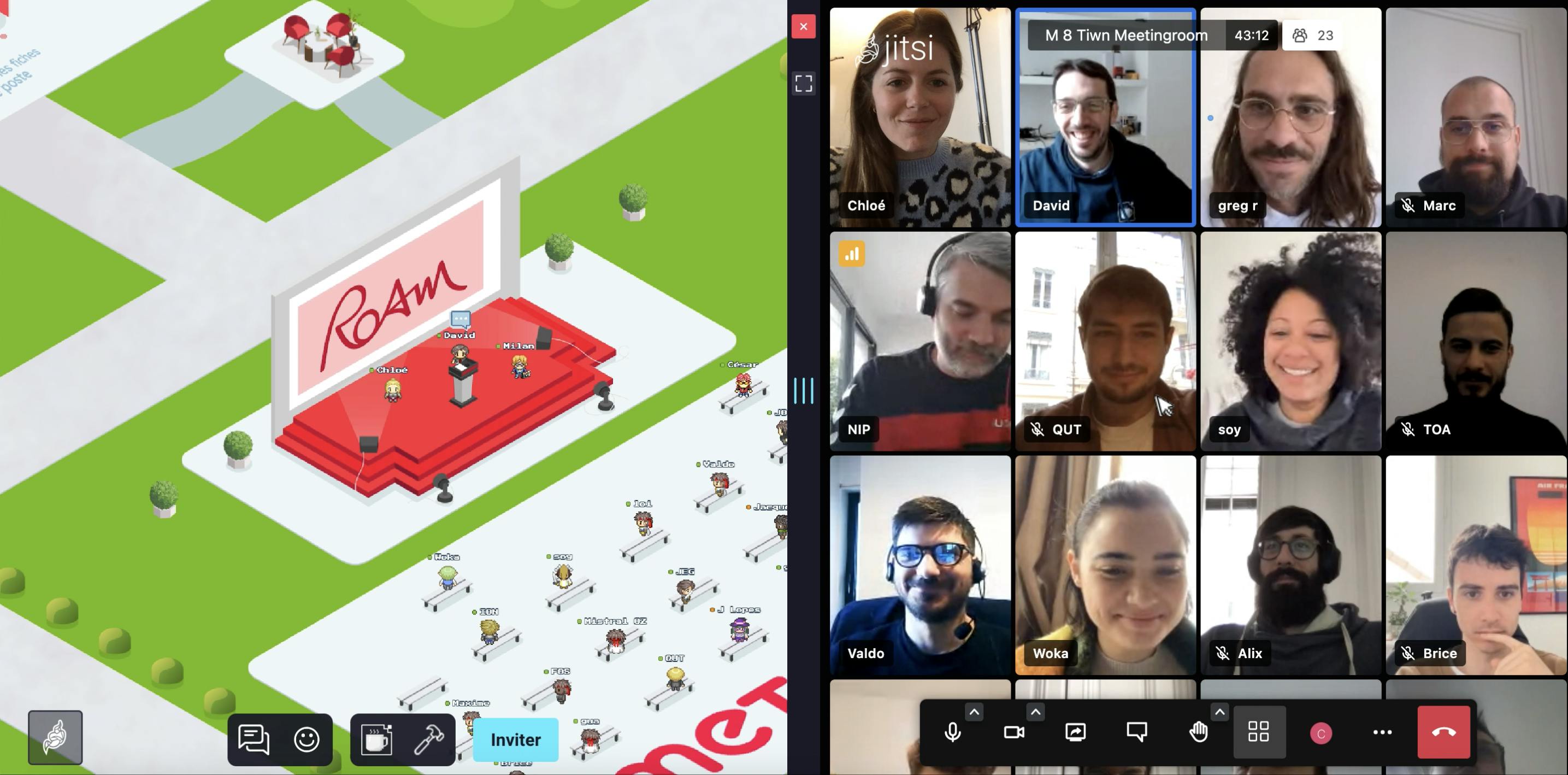🪐 Virtual worlds: game or work? Understanding the nuances between gaming and gamification!

Summary
1. Nuances between gaming and gamification
2. Benefits of gamification in employee relations
3. What are the risks of confusing "gaming" et "gamification" ?
Nuances between gaming and gamification
A virtual world allows a user to be spatialised - virtually projected in an immersive world - via an avatar. This avatar then allows the user to move and interact in a specially designed environment with other avatars or objects. Several types of experiences are possible:
-
Gaming: playing a game, solving puzzles, doing a quest, destroying monsters...
-
Gamification: which aims to make non-game activities more engaging and motivating by integrating game mechanisms.
These two notions of gaming and gamification are thus very close and at the same time very far apart. They are (too) often confused and have many differences.
Some major differences between gamification and gaming :
-
Objectives: Gaming is primarily aimed at entertaining a player, whereas gamification is aimed at engaging a user in a specific professional or educational activity
-
Structure: Gaming is often characterised by defined objectives, strict rules and increasing levels of difficulty. Gamification can use some game mechanisms such as rewards, badges to motivate participants in non-gaming contexts.
-
Engagement: Gamification relies on intrinsic motivation and behavioural design to engage users, whereas gaming is designed to be intrinsically motivating.
Gaming is therefore primarily intended to entertain, whereas gamification uses game principles to improve user motivation, engagement and collaboration in professional or educational areas.
Benefits of gamification in employee relations
Gamification can be a useful tool for improving employee relations within a company. By using game mechanisms, employees can be encouraged to collaborate, support each other and develop important interpersonal skills.
Gamification helps to develop interpersonal skills such as caring, empathy, listening, adaptability, stress management and management. By engaging employees in team games, cooperation and sharing of positive experiences can be encouraged. In addition, gamification can help to strengthen the sense of belonging to the company, better understand its culture which can improve employee relations and engagement in their work.
For gamification to be effective, it is important to choose a suitable platform that appeals to all employees, young and old, tech and non-tech. It is also important to focus on behaviors that create value, rather than on purely competitive objectives.
At the end, gamification can be used to facilitate the integration of new employees. Using fun methods to introduce the company and its values, share content easily and make other teams accessible can help newcomers integrate more easily and feel welcome.
The gamification of organisational and operational processes in a company thus offers many benefits to employees:
-
Training: Virtual worlds can be used to train employees in a safe and interactive environment.
-
Collaboration: Virtual worlds can facilitate collaboration between employees working remotely or in different locations, allowing real-time interactions.
-
Recruitment: Companies can use virtual worlds to recruit talent by holding online recruitment events. Candidates can interact with company representatives in a virtual environment and learn about the company's opportunities.
-
Marketing: Virtual worlds can be used to host events such as product launches, exhibitions and demonstrations. Participants can experience and interact with the organiser's products and services in an immersive virtual environment.
-
Productivity: Virtual worlds can be used to improve employee productivity by creating a more stimulating and fun work environment. Gamification can thus be used to encourage employees to achieve goals and results.
What are the risks of confusing "gaming" et "gamification" ?
Confusing "gaming" and "gamification" in a professional environment can lead to several risks and negative consequences:
-
Misuse of resources: If company managers confuse the terms "gaming" and "gamification", they risk spending significant resources (financial, time, etc.) to develop games that do not meet the company's learning, training and collaboration objectives.
-
Waste of time: If employees confuse gaming with gamification, they risk playing games that are not directly related to their learning and training objectives. This is a loss for both the employee and the company, as both will not have achieved their objectives.
-
Decreased productivity: If employees feel demotivated or distracted by games that are not directly related to their work, this could lead to decreased productivity and quality of work.
-
Reputational damage: If the use of games or game elements in a work environment is perceived as a waste of time and resources, it could damage the company's reputation.
The possibilities offered by virtual worlds and the gamification of experiences that result from them provide companies with significant training, collaboration, recruitment, marketing and productivity benefits in line with the expectations of new generations. It is essential to understand the needs and objectives of each experience before embarking on the design of a gamified experience. Gamification should not be used as a substitute for training or work experience, but rather as a complement to it. And it is not suitable for all experiences!
Before embarking on the creation of your experience, keep in mind that its deployment requires investments in terms of time, resources and technology, not to mention the necessary change management ;-)
To talk about it, meet me at the (virtual) office 🚀
